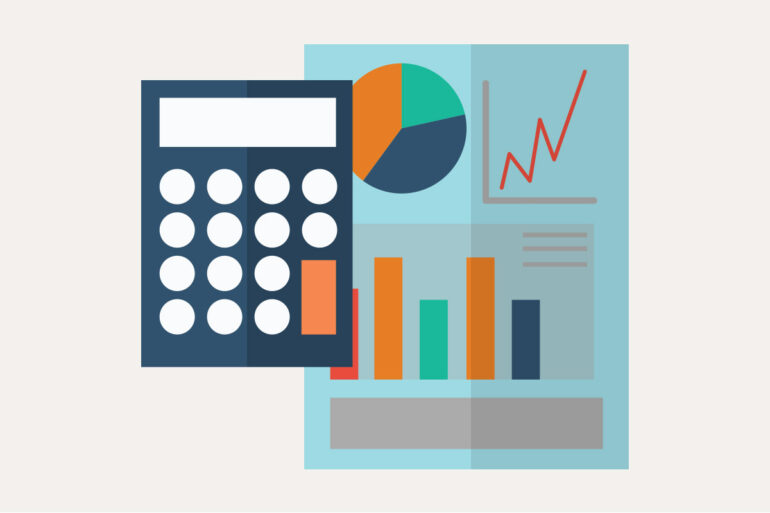Working Capital

Net working capital is one of the most important measures of a company’s health because it indicates the ability to pay debts on time. You may not use the term “working capital,” but if you’re in business, you’re familiar with the concept.
We’ve all done the anxious mental math to estimate our available (or soon-to-be available) cash and compare it with upcoming bills. When you calculate either a surplus or shortfall of resources to meet your financial obligations, you have essentially calculated your net working capital.
These calculations offer simple, interesting and important insights by comparing a company’s total current assets to its total current liabilities, both of which are itemized as single lines on your balance sheet.
Current assets are resources that can be converted into cash within one year and typically include, in addition to cash itself, accounts receivable and inventory. These assets are labeled “current” because they are more easily converted to cash than fixed assets like equipment and real estate. Current liabilities are obligations that must be paid within a year and include items such as accounts payable, credit card debts and short-term loans.
Companies generally look to their current assets as the resource they will use to pay current liabilities. The question they all want answered is: Will there be enough? It’s typically answered by calculating two key numbers: net working capital and the current ratio. Both address the question but in different ways.
Net working capital
Net working capital is simply the difference between current assets and current liabilities. If you subtract current liabilities from current assets and the remainder is positive, you have more than enough to pay all current liabilities.
For example, imagine your business has $2 million in current assets made up of some cash but primarily of accounts receivable and inventory. At the same time, your business has $1.5 million in current liabilities made up of accounts payable, credit card debt and short-term bank debt. Your business would have $500,000 of net working capital ($2 million assets – $1.5 million liabilities = $500,000). Not bad!
Theoretically, you have $500,000 more than it would take to pay all your current obligations. I say “theoretically” because accounts receivable and inventory are not cash, and you may not be able to convert them to cash in time to meet bill due dates. Nevertheless, a $500,000 cushion looks pretty robust for a company of this size.
If you subtract current liabilities from current assets and the remainder is negative, you are in trouble. You do not have enough resources to pay your bills and must take action to avoid serious financial problems.
Net working capital numbers are also used as growth planning tools. To show how, suppose your annual sales last year were $2 million and your average receivables and inventory over the year hovered around $500,000 at any given time. That tells us you require net working capital equal to 25% of sales ($500,000 net working capital / $2 million sales = 25%) to operate. If you plan to double your sales, you must also plan to double your net working capital.
In this example, doubling sales means doubling working capital from $500,000 to $1 million. Where will that extra $500,000 come from? Significant growth without adequate working capital inevitably leads to trouble or failure for companies that grow too fast.
Current ratio
The current ratio is used primarily to gauge the financial health of a company. It is calculated by dividing current assets by current liabilities.
Using the previous example, dividing $2 million of current assets by $1.5 million of current liabilities gives a ratio of 1.33:1. So for every dollar of current liability, the company has $1.33 in current assets — a healthy number. (Many banks and other financial institutions consider a ratio of 1.2:1 to be satisfactory.) Unlike net working capital — a single number that can vary greatly in significance depending on a company’s size — the current ratio offers a uniform benchmark that is useful for comparison over time and on different scales.
With good books, you don’t need to rely on memory, digital banking apps or guesses to calculate your working capital; all the information you need is neatly itemized and labeled on your balance sheet.”
Martin Holland, Anneal Business Coaching
Both net working capital and the current ratio are straightforward yet crucial key performance indicators to measure. They are easy to calculate and compare. With good books, you don’t need to rely on memory, digital banking apps or guesses to calculate your working capital; all the information you need is neatly itemized and labeled on your balance sheet.
Your financial health check
Will you have enough to pay your bills? Why not do a quick financial health check on your business? Find your total current assets and current liabilities on your balance sheet and compute your net working capital (subtract current liabilities from current assets) and current ratio (divide current assets by current liabilities).
Write down both KPIs, calculating them for every month, and look for changes. What do they reveal about your business? Do they reflect financial stability and growth potential? Are you prepared to handle sudden financial challenges or to capitalize on new growth opportunities?
That is a lot of financial insight you can gain from two simple numbers. That insight today can shape your trajectory for years to come. One other thing to keep in mind: You may not keep a constant eye on these two KPIs but your banker definitely is.






